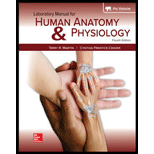
Match the pancreatic islet hormone in column A to its proper description in column B. Place the letter of your choice in the space provided. (Answers will be used more than once.
Column A Column B
a. Insulin 1. Inhibits pancreatic digestive enzyme secretion
b. Glucagon ________ 2. Released in response to low blood sugar levels
c. Somatostatin ________ 3. Released in response to high blood sugar levels
d. Pancreatic polypeptide ________ 4. Inhibits or modulates alpha and beta cell secretions
_________ 5. Secreted by beta cells
________ 6. Secreted by delta cells
_________ 7. Secreted by alpha cells
________ 8. Secreted by F cells
______ 9. Hyperglycemic hormone
______10. Hypoglycemic hormone
Want to see the full answer?
Check out a sample textbook solution
Chapter 40 Solutions
Laboratory Manual For Human Anatomy & Physiology
- write a terminology in column B which meets the description of column A COLUMN A COLUMN B 1. Involuntary regulation of body physiology by the nervous system 2. Nerve unit that recieves impulses from the sensory organs 3. The innermost connective tissue layer that is wrapped around each muscle fibre 4. Relating to the outermost part of the body 5. A testicular hormone that affects the physical features of males 6. A connective tissue that consists of fat cells 7. Nerve unit that conducts electrical impulses away from the central nervous system 8. To be inserted between layers of tissues/cells 9. The portion of a nerve cell between the cell body and dendrites 10. A long filament which is one of the subunits of a muscle wallarrow_forwardDEFINING TERMS (ENDOCRINE SYSTEM) Write a word for each clue. 1. organs that are specialized to secrete or excrete hormones Click or tap here to enter text. 2. the organ or structure toward which the effects of a hormone are directed Click or tap here to enter text. 3. the meaning of ren/o Click or tap here to enter text. 4. removal or destruction of the pituitary Click or tap here to enter text. 5. small glands attached to thyroid gland Click or tap here to enter text. 6. a gland located at the front of the neck Click or tap here to enter text. 7. paired male organs that produce testosterone Click or tap here to enter text. 8. the meaning of iod/o Click or tap here to enter text. 9. female organs that produce estrogen Click or tap here to enter text. 10. hypophysis Click or tap here to enter text. 11. increased sugar in the blood Click or tap here to enter text. 12. female sex hormone Click or tap here to enter text. 13. enlargement of the thyroid gland Click or tap here to enter…arrow_forward(PLEASE ANSWER ALL OF THE QUESTIONS) 7. What endocrine gland(s) is positioned on top of the kidneys in the abdominal cavity? Select one: a. The pineal gland b. The adrenal glands c. The hypothalamus d. The thyroid e. The thymus gland 8. What disorder is caused by hypothyroidism? Select one: a. Cushing syndrome b. Diabetes type 1 c. Diabetes type 2 d. Goiters e. Sleep disorders 9. Which of the following could suggest that pheromones play a role in human physiology? Select one: a. The synchronization of menstrual cycles of women which live together b. The regulation of calcium in the blood c. The circadian rhythm in humans d. The regulation of blood sugar by the pancreas e. The production of milk by a new mother for her babyarrow_forward
- 5-year-old Cindy has wet the bed again. She is not being a "bad girl", she just has age-related _______________________ of ADH at night. A. hypersecretion B. hyposecretionarrow_forward39 words A school-age child present with new-onset type 1 diabetes mellitus. The nurse should recognize the caregiver demonstrates understanding of how to manage the child's illness by which statement? 30) X A. Long-acting insulin is administered before each meal. B. Index fingers should be used for blood glucose testing. C. Blood glucose stability can be achieved with a restricted diet. D. Insulin injection sites are rotated between arm and legs. Accessibility: Investigate English (United States)arrow_forward7) Sally’s mother has Huntington’s disease. Sally’s father doesn’t have Huntington’s disease. What are the chances that Sally will have Huntington’s disease? __________________________________________________________________arrow_forward
 Medical Terminology for Health Professions, Spira...Health & NutritionISBN:9781305634350Author:Ann Ehrlich, Carol L. Schroeder, Laura Ehrlich, Katrina A. SchroederPublisher:Cengage Learning
Medical Terminology for Health Professions, Spira...Health & NutritionISBN:9781305634350Author:Ann Ehrlich, Carol L. Schroeder, Laura Ehrlich, Katrina A. SchroederPublisher:Cengage Learning



